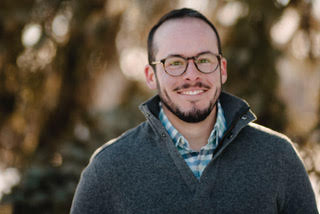
Kamira/Shutterstock
.
Riley (all names have been changed to protect research participants’ privacy) had been living with their grandmother before moving into the emergency shelter where I met them. They described their grandmother as “kind of my best friend” and the only person in their family who had been there for them during difficult times. Living together, however, had become more difficult as Riley became more aware and more open about their nonbinary gender identity and pansexual sexual orientation.
There would often be arguments or debates; Riley’s grandmother is deeply religious and frequently expressed her belief that Riley’s LGBTQ identities were sinful. She encouraged Riley to attend church, to dress according to their assigned gender and to stop using their chosen name and pronouns. Riley tried to explain why these issues were important to them but felt that their words didn’t get through to their grandmother. These arguments would escalate with Riley’s grandmother kicking Riley out of her home several times.

Jonah DeChants
Riley and I met for several research interviews as part of my dissertation study, which examined the experiences of young people in Riley’s position — youth and young adults who had experienced housing instability due to their families’ rejection of their LGBTQ (lesbian, gay, bisexual, transgender, queer or questioning) identities.
At our first interview, Riley described the situation at their grandmother’s house as uncomfortable and stifling. They noted that their relationship with their grandmother had improved substantially since they had left her house; without the stress of sharing a living space they were able to connect on other topics.
I was surprised when we met a month later for another interview and Riley shared that they were thinking about moving to another state with their grandmother. They talked about how the new state had better educational opportunities and how it felt important to maintain their relationship with their grandmother, despite the tension around their identities.
“I just hope that I could continue having a relationship with her until her time comes … because I’m the only person she talks to in any of the family. I just don’t want her to die lonely.” Riley was torn between their understanding that their grandmother did not accept their identity and the emotional pain that caused, and their desire to maintain a relationship with her.
Family Rejection As Factor of LGBTQ Homelessness
Riley’s complicated relationship with their grandmother illuminates a common tension for many LGBTQ youth and young adults experiencing housing instability — their families are sources of both stress and support. We know that LGBTQ young people are overrepresented among youth experiencing homelessness. We also know that both youth themselves and staff who work in youth emergency shelters report that family conflict around young people’s LGBTQ identities is a cause of youth being forced or choosing to leave home.
This housing instability — not having a regular, safe place to stay — creates serious barriers for LGBTQ youth as they work to become independent adults. It is challenging to stay engaged in school or focused on a job when you are worried about where you are going to sleep tonight, or don’t have a safe place to bathe or keep your belongings. This lack of stability increases the likelihood that youth will have contact with the juvenile or criminal justice systems, further pushing them to the margins of society.
All the young people I spoke to described how their families’ lack of acceptance of their LGBTQ identity contributed to them leaving home. Families responded by verbally harassing the youth or using anti-gay or anti-trans slurs in the home. Several families exerted control of their child’s appearance, limiting the clothes or accessories they could wear and how they could express their gender or sexuality.
Families also controlled young people’s access to belongings, sometimes confiscating their property while they lived in the home or preventing them from accessing their belongings after they left the home. These actions caused youth to question their family relationships and frequently motivated them to leave home. Bryan recalled concluding that he needed to leave home after his mother’s anti-gay harassment increased after he came out: “The love I’m receiving, is that unconditional? So, yeah … guess I gotta go.”
Leaving home was often a complicated and nonlinear process. Some youth were expelled from the home by their parents or guardians. Elena recalled coming home from school to find the front door locked. “So I knocked, and my stepdad came out and shut the door behind him on the porch … Yes, and was like, ‘You’re not coming back in.’”
Some youth were kicked out multiple times, their families insisting that they return only to kick them out again. Other young people described the decision to leave home as their own. Some extensively planned their exits, looking into alternative housing or planning which of their belongings they would bring with them.
Youth described the decision to leave as a decision to pursue their own life and prioritize their goals and future over the transphobic or homophobic beliefs of their families. Tyler summed up this perspective powerfully, “This is a life that I’ve chosen for myself. As opposed to one that I’ve been forced into.”
Family Relationships After Leaving Home
While all the young people had experienced some level of conflict with family, many of them continued to have relationships with family. Several youth, like Riley, described a fluid relationship with their family home, moving in when they needed a place to stay but leaving again when tensions became unbearable. For these young people, their families still offered important supports — a place to stay, emotional outlets and long-lasting relationships.
Many of these young people struggled to reconcile their desire to stay connected with their families with their desire to be accepted. Lucy recalled how constantly debating with her mother exhausted her, but she didn’t want to lose her relationships with other family members. “I’m kind of like at this place where I’m just kind of like weighing it all and trying to figure out a balance of like how do I have a relationship with my dad and brothers while distancing as much as possible from my mom?” Several youths noted that they maintained contact with their families in order to stay in touch with their siblings, who were generally more accepting than their parents.
Helping Youth Set Healthy Boundaries
These conversations illuminate the tremendous complexities that LGBTQ youth are navigating as they experience housing instability and family rejection. It also highlights the important role of service providers who work with these young people. Folks working in emergency shelters or youth drop-in spaces should remember that family may be a complicated topic for LGBTQ youth.
Rather than simply assuming that youth have no contact with their families, they should ask open-ended questions to learn more about each youth’s unique relationship and family history. They should help young people establish healthy boundaries with parents, guardians and other family members by asking young people to reflect on their experiences: Is this family member a source of stress? Or of support? If both, how can they maintain relationships to receive support while establishing boundaries to minimize stress.
Youth in this study reported that intentionally limiting the amount of time that they spent in contact with or the kinds of conversations they were willing to have with family helped them feel safer and less stressed in their family relationships. Blue described, “I keep everything very surface, I don’t like to talk to [my mom] for very long about anything that’s important to me.”
In the event that a youth feels the need to completely cut off contact with their family of origin, a service provider can help youth build and maintain a new social support network or chosen family. Helping young adults actively cultivate their social support networks, identifying supportive connections and establishing boundaries with stressful ones will minimize stress and build healthy coping techniques. Learning to build positive, supportive social networks is an important skill that will help LGBTQ youth as they grow into happy and healthy adulthoods.
This column has been updated.
Jonah DeChants is a postdoctoral fellow at Colorado State University’s School of Social Work. He uses community-based research methods to study the resilience of LGBTQ youth and young adults experiencing housing instability.































